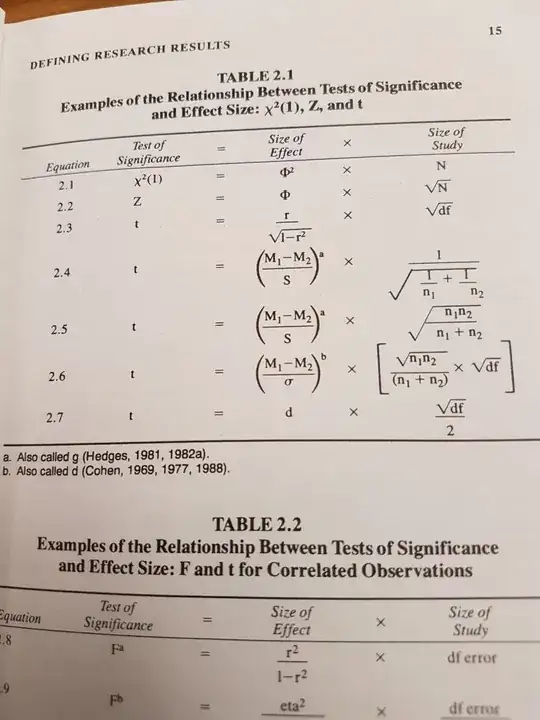In order to calculate an effect size estimator for a non-parametric test such as the Wilcoxon test, the following formula is applied: $ r= \frac{Z}{\sqrt{N}} $
This formula is suggested by several forum contributions and is also used by SPSS for the purpose described above. Originally the formula was developed to my knowledge by Rosenthal (1991, p.19).
Beside just using the formula, I am interested at how to arrive at it as I do not see the connection between the correlation coefficient and the z value. If someone could provide an explanation of how to arrive at the formula or a derivation, I would be glad.
The only hint I have about the formula is in the following table equation 2.1 and 2.2. Rosenthal does not provide unfortunately an explanation about this relationship.

Note: There has been already a discussion about this topic but rather in the form how to use and interpret it and not how to arrive at it. Effect size to Wilcoxon signed rank test?
Rosenthal, R. (1991). Applied Social Research Methods: Meta-analytic procedures for social research Thousand Oaks, CA: SAGE Publications Ltd doi: 10.4135/9781412984997